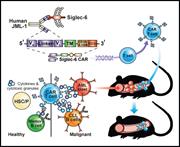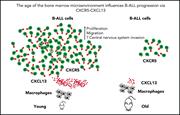Issue Archive
Table of Contents
BLOOD COMMENTARIES
HOW I TREAT
How I treat bleeding disorder of unknown cause
Only about 30% of patients referred for assessment of a possible bleeding disorder receive a clear diagnosis. Using 3 illustrative cases, Baker and O’Donnell outline a useful algorithm for the diagnosis and treatment of bleeding disorder of unknown cause. Diagnostic bleeding assessment tools and a stepwise approach to bleeding prevention and treatment are helpful for this challenging group of patients.
CLINICAL TRIALS AND OBSERVATIONS
Durable remissions following combined targeted therapy in patients with CLL harboring TP53 deletions and/or mutations
Clinical Trials & Observations
Deletion 17p or TP53 mutation confers poor prognosis with chemoimmunotherapy in chronic lymphocytic leukemia (CLL). Cramer et al present data on 51 patients with TP53 deletions and/or mutations from trials of targeted therapy with ibrutinib/ofatumumab, ibrutinib/obinutuzumab, and venetoclax/obinutuzumab. Outcomes appear more favorable than with chemoimmunotherapy, with a median progression-free survival of 45 months. One-third of patients discontinued therapy with undetectable minimal residual disease, with 6 of 17 remaining in remission at 6 to 47 months.
HEMATOPOIESIS AND STEM CELLS
Peripheral B cells repress B-cell regeneration in aging through a TNF-α/IGFBP-1/IGF-1 immune-endocrine axis
IMMUNOBIOLOGY AND IMMUNOTHERAPY
Siglec-6 is a novel target for CAR T-cell therapy in acute myeloid leukemia
CAR T-cell therapy for acute myeloid leukemia (AML) is hindered by the need to identify a suitable target antigen widely expressed on leukemia cells but not on normal stem cells. Jetani and colleagues identify sialic acid–binding immunoglobulin-like lectin 6 (Siglec-6) as such an antigen, as it is abundantly expressed on 60% of AML blasts and leukemic stem cells but not on normal hematopoietic stem cells. The authors propose it as a candidate for clinical investigation for AML therapy.
LYMPHOID NEOPLASIA
PRC2 loss of function confers a targetable vulnerability to BET proteins in T-ALL
T-cell acute lymphoblastic leukemia (T-ALL) has a poor prognosis. Polycomb repressor complex 2 (PRC2) mutations have been reported in pediatric T-ALL, but their role in adult patients is not known. Andrieu et al report that PRC2 alterations are common in adult T-ALL, where PRC2 loss of function reactivates stem cell programs mediated by bromodomain and extraterminal (BET) proteins to sustain T-ALL, suggesting a potential targetable pathway in adult T-ALL.
The age of the bone marrow microenvironment influences B-cell acute lymphoblastic leukemia progression via CXCR5-CXCL13
Zanetti et al suggest that the predilection of B-cell lymphoblastic leukemia (B-ALL) to affect children is a reflection of their bone marrow (BM) microenvironment. Using murine models of B-ALL in young and old mice, they demonstrate differential effects of BM macrophages on B-ALL cells, likely mediated by elevated CXCL13 produced by young macrophages. Pretreatment of B-ALL–initiating cells with CXCL13 accelerated progression, while deficiency of the CXCL13 receptor CXCR5 prolonged murine B-ALL survival, suggesting the CXCL13-CXCR5 axis as a potential novel target for pediatric B-ALL.
MYELOID NEOPLASIA
Machine learning integrates genomic signatures for subclassification beyond primary and secondary acute myeloid leukemia
Clinical Trials & Observations
Awado and colleagues used machine learning to integrate cytogenetic and gene sequencing data from 6788 patients with acute myeloid leukemia (AML) to construct a molecular classification scheme for AML. They define 4 unique genomic clusters with distinct prognosis that incorporate biological correlates with molecular profile, and they provide an open access molecular classification tool for clinical use.
LETTERS TO BLOOD
HSCT corrects primary immunodeficiency and immune dysregulation in patients with POMP-related autoinflammatory disease
Validation of the International Myeloma Working Group standard response criteria in the PETHEMA/GEM2012MENOS65 study: are these times of change?
Clinical Trials & Observations
BLOOD WORK
-
Cover Image
Cover Image
![issue cover]()
Bone marrow macrophages from young mice stained with an antibody to translocase of the outer membrane 20 (TOM20) (green) to visualize mitochondria and DAPI (4′,6-diamidino-2-phenylindole) to visualize nuclei (blue). See the article by Zanetti et al on page 1871.
- PDF Icon Front MatterFront Matter
- PDF Icon Table of ContentsTable of Contents
- PDF Icon Back MatterBack Matter
- PDF Icon Editorial BoardEditorial Board
Advertisement intended for health care professionals
Email alerts
Advertisement intended for health care professionals











Improving the outlook for TP53-aberrant CLL
Clinical Trials & Observations